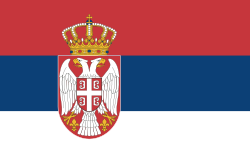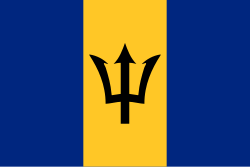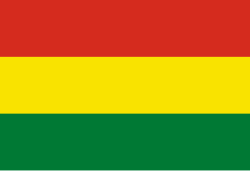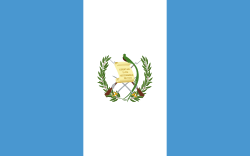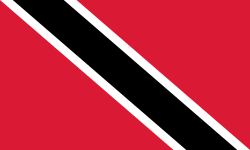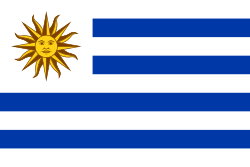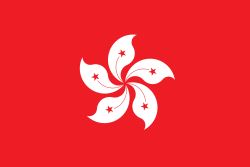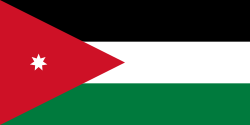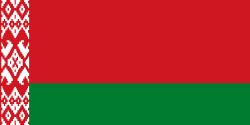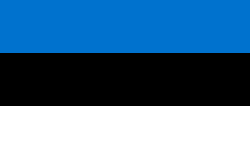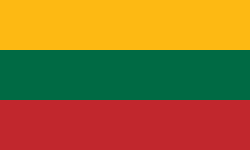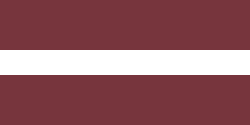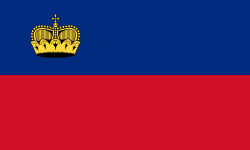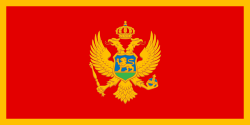Fed Cup 2007
| Fed Cup 2007 | |
|---|---|
| Datum | 16. dubna – 16. září 2007 |
| Ročník | 45. |
| Finálové utkání | |
| Vítěz | |
| Finalista | |
| Výsledek | 4–0 |
| Místo | Moskva, Rusko |
| Povrch | antuka / uvnitř |
| Fed Cup | |
< 2006 2008 > | |
Fed Cup 2007, oficiálně se jménem sponzora Fed Cup by BNP Paribas 2007, byl 45. ročník ženské tenisové týmové soutěže ve Fed Cupu, největší každoročně pořádané kolektivní události v ženském sportu. Obhájkyněmi titulu z předešlého ročníku 2006 byly hráčky Itálie, které v předchozím finále v charleroiské hale zdolaly Belgii 3:2 na zápasy.
První kolo Světové skupiny tohoto ročníku se konalo mezi 21. a 22. dubnem. Semifinále se odehrálo 14. a 15. červencem a finále se uskutečnilo 15. a 16. září 2007.
Třetí titul v soutěži – i za předešlé čtyři ročníky – vyhrálo Rusko, když ve finále hraném v Paláci sportu Lužnikách hladce porazilo Itálii 4:0 na zápasy.
Světová skupina
Účastníci
| Účastníci | |||
|---|---|---|---|
Pavouk
| Čtvrtfinále 21.–22. dubna | Semifinále 14.–15. července | Finále 15.–16. září | |||||||||||||
| Castellaneta Marina, Itálie (venku, antuka) | |||||||||||||||
| 1 | | 5 | |||||||||||||
| | 0 | Castellaneta, Itálie (venku, antuka) | |||||||||||||
| 1 | | 3 | |||||||||||||
| Limoges, Francie (hala, antuka) | 4 | | 2 | ||||||||||||
| | 0 | ||||||||||||||
| 4 | | 5 | Moskva, Rusko (hala, antuka) | ||||||||||||
| 1 | | 0 | |||||||||||||
| Moskva, Rusko (hala, antuka) | 3 | | 4 | ||||||||||||
| 3 | | 5 | |||||||||||||
| | 0 | Stowe, VT, Spojené státy (venku, tvrdý) | |||||||||||||
| 3 | | 3 | |||||||||||||
| Delray Beach, Spojené státy (venku, tvrdý) | | 2 | |||||||||||||
| | 5 | ||||||||||||||
| 2 | | 0 | |||||||||||||
Baráž Světové skupiny
Čtyři týmy, které prohrály v 1. kole Světové skupiny (Belgie, Čínská lidová republika, Japonsko a Španělsko) se v baráži o Světovou skupinu 2008 utkaly se čtyřmi vítěznými družstvy ze Světové skupiny II (Českou republikou, Izraelem, Německem a Rakouskem).
- Čínská lidová republika, Izrael, Německo a Španělsko si zajistily účast ve Světové skupině 2008.
| Baráž Světové skupiny – 14. a 15. července | ||||
|---|---|---|---|---|
| Místo konání | povrch | domácí | výsledek | hosté |
| Linec, Rakousko | venku, antuka | 1–4 | ||
| Knokke-Heist, Belgie | venku, antuka | 1–4 | ||
| Tojota, Japonsko | hala, koberec | 2–3 | ||
| Palafrugell, Španělsko | venku, antuka | 4–1 | ||
Světová skupina II
Světová skupina II představovala druhou nejvyšší úroveň soutěže. Čtyři vítězné týmy – Kanada, Polsko, Francie a Argentina, postoupily do barážových utkání o účast ve Světové skupině 2008. Na poražené – Srbsko, Švédsko, Švýcarsko a Japonsko, čekala dubnová baráži o setrvání v této úrovni soutěže v příštím ročníku.
| Světová skupina II – 21. a 22. dubna | ||||
|---|---|---|---|---|
| Místo konání | Povrch | Domácí | Výsledek | Hosté |
| Bratislava, Slovensko | venku, antuka | 0–5 | ||
| Fürth, Německo | venku, antuka | 4–1 | ||
| Kamloops, Kanada | hala, koberec | 2–3 | ||
| Dornbirn, Rakousko | hala, antuka | 4–1 | ||
Baráž Světové skupiny II
Čtyři týmy, které prohrály v 1. kole Světové skupiny II – Austrálie, Chorvatsko, Kanada a Slovensko, se utkaly v baráži o Světovou skupinu II 2008 se čtyřmi kvalifikanty z 1. skupin oblastních zón. Dva týmy se k barážovým zápasům kvalifikovaly z evropsko-africké zóny (Srbsko a Ukrajina), jeden z asijsko-oceánské zóny (Tchaj-wan) a jeden z americké zóny (Argentina).
- Argentina, Chorvatsko, Slovensko a Ukrajina si zajistily účast ve druhé světové skupině 2008.
| Baráž Světové skupiny II – 14. a 15. července | ||||
|---|---|---|---|---|
| Místo konání | povrch | domácí | výsledek | hosté |
| Ashmore, Austrálie | venku, tvrdý | 1–4 | ||
| Córdoba, Argentina | venku, antuka | 4–1 | ||
| Split, Chorvatsko | venku, antuka | 3–2 | ||
| Košice, Slovensko | hala, tvrdý | 4–1 | ||
Americká zóna
1. skupina
- Místo konání: Pilara Tenis Club, Buenos Aires, Argentina (antuka, venku)
- Datum: 18.–21. dubna
- Výsledek
 Argentina postoupila do baráže o účast ve Světové skupině II pro rok 2008
Argentina postoupila do baráže o účast ve Světové skupině II pro rok 2008 Chile a
Chile a  Dominikánská republika sestoupily do 2. skupiny Americké zóny pro rok 2008
Dominikánská republika sestoupily do 2. skupiny Americké zóny pro rok 2008
2. skupina
- Místo konání:: Carrasco Lawn Tennis Club, Montevideo, Uruguay (antuka, venku)
- Datum: 16.–21. dubna 2007
- Výsledek
Zóna Asie a Oceánie
1. skupina
- Místo konání: Scenic Circles Hotel Tennis Centre, Christchurch, Nový Zéland (venku, tvrdý)
- Datum: 16.–21. dubna 2007
 Tchaj-wan
Tchaj-wan Hongkong
Hongkong Indie
Indie Jordánsko
Jordánsko Kazachstán
Kazachstán Nový Zéland
Nový Zéland Singapur
Singapur Jižní Korea
Jižní Korea Thajsko
Thajsko Uzbekistán
Uzbekistán
- Výsledek
 Tchaj-wan postoupil do baráže o účast ve Světové skupině II pro rok 2008
Tchaj-wan postoupil do baráže o účast ve Světové skupině II pro rok 2008
Zóna Evropy a Afriky
1. skupina
- Datum: 18.–21. dubna 2007
- Výsledek
 Srbsko a
Srbsko a  Ukrajina postoupily do baráže o účast ve Světové skupině II pro rok 2008
Ukrajina postoupily do baráže o účast ve Světové skupině II pro rok 2008 Estonsko a
Estonsko a  Litva sestoupily do 2. skupiny zóny Evropy a Afriky pro rok 2008
Litva sestoupily do 2. skupiny zóny Evropy a Afriky pro rok 2008
2. skupina
- Místo konání: National Tennis Centre, Vacoas-Phoenix, Mauricius (tvrdý, venku)
- Datum: 17.–20. dubna 2007
- Výsledek
 Portugalsko a
Portugalsko a  Portugalsko postoupily do 1. skupiny zóny Evropy a Afriky pro rok 2008
Portugalsko postoupily do 1. skupiny zóny Evropy a Afriky pro rok 2008 Finsko a
Finsko a  Norsko sestoupily do 3. skupiny zóny Evropy a Afriky pro rok 2008
Norsko sestoupily do 3. skupiny zóny Evropy a Afriky pro rok 2008
3. skupina
- Místo konání: National Tennis Centre, Vacoas-Phoenix, Mauricius (tvrdý, venku)
- Datum: 23.–27. dubna 2007
 Ázerbájdžán
Ázerbájdžán Egypt
Egypt Irsko
Irsko Lotyšsko
Lotyšsko Lichtenštejnsko
Lichtenštejnsko Malta
Malta Mauricius
Mauricius Moldavsko
Moldavsko Černá Hora
Černá Hora Turecko
Turecko
- Výsledek
Žebříček ITF 2007
Žebříček ITF národních družstev byl vydáván vždy po odehraném kolu světové skupiny a kombinoval body z posledních čtyř ročníků.[1]
|
|
| ||||||||||||||||||||||||||||||||||||||||||||||||||||||||||||||||||||||||||||||||||||||||||||||||||||||||||||||||||||||||||||||||||||||||||||||||
Odkazy
Reference
V tomto článku byl použit překlad textu z článku 2007 Fed Cup na anglické Wikipedii.
- ↑ Rankings Explained. www.fedcup.com. fedcup.com. Dostupné online [cit. 21 June 2012]. (anglicky)
Externí odkazy
 Obrázky, zvuky či videa k tématu Fed Cup 2007 na Wikimedia Commons
Obrázky, zvuky či videa k tématu Fed Cup 2007 na Wikimedia Commons - Fed Cup Archivováno 7. 10. 2010 na Wayback Machine. – oficiální stránka (anglicky)
Média použitá na této stránce
This is the national flag of Belgium, according to the Official Guide to Belgian Protocol. It has a 13:15 aspect ratio, though it is rarely seen in this ratio.
Its colours are defined as Pantone black, Pantone yellow 115, and Pantone red 032; also given as CMYK 0,0,0,100; 0,8.5,79,0; and 0,94,87,0.Vlajka České republiky. Podoba státní vlajky České republiky je definována zákonem České národní rady č. 3/1993 Sb., o státních symbolech České republiky, přijatým 17. prosince 1992 a který nabyl účinnosti 1. ledna 1993, kdy rozdělením České a Slovenské Federativní republiky vznikla samostatná Česká republika. Vlajka je popsána v § 4 takto: „Státní vlajka České republiky se skládá z horního pruhu bílého a dolního pruhu červeného, mezi něž je vsunut žerďový modrý klín do poloviny délky vlajky. Poměr šířky k její délce je 2 : 3.“
Flag of Canada introduced in 1965, using Pantone colors. This design replaced the Canadian Red Ensign design.
Flag of Australia, when congruence with this colour chart is required (i.e. when a "less bright" version is needed).
See Flag of Australia.svg for main file information.Chinese Taipei Olympic Flag. According to the official website of Chinese Taipei Olympic Committee, Blue Sky(circle) & White Sun(triangles) above the Olympic rings is neither the National Emblem of the Republic of China, nor the Party Emblem of Kuomintang (KMT), but a design in between, where the triangles do not extend to the edge of the blue circle, as registered at International Olympic Committee in 1981 and digitally rendered in 2013. Besides, the blue outline of the five-petaled plum blossom is broader than the red one. Moreover, the CMYK code of the blue one and the Blue Sky & White Sun is "C100-M100-Y0-K0", and different from the Olympic rings (C100-M25-Y0-K0). Note that it's the only version recognized by IOC.
Chinese Taipei Olympic Flag. According to the official website of Chinese Taipei Olympic Committee, Blue Sky(circle) & White Sun(triangles) above the Olympic rings is neither the National Emblem of the Republic of China, nor the Party Emblem of Kuomintang (KMT), but a design in between, where the triangles do not extend to the edge of the blue circle, as registered at International Olympic Committee in 1981 and digitally rendered in 2013. Besides, the blue outline of the five-petaled plum blossom is broader than the red one. Moreover, the CMYK code of the blue one and the Blue Sky & White Sun is "C100-M100-Y0-K0", and different from the Olympic rings (C100-M25-Y0-K0). Note that it's the only version recognized by IOC.
Při zobrazení tohoto souboru lze snadno přidat orámování
The flag of the Dominican Republic has a centered white cross that extends to the edges. This emblem is similar to the flag design and shows a bible, a cross of gold and 6 Dominican flags. There are branches of olive and palm around the shield and above on the ribbon is the motto "Dios,Patria!, Libertad" ("God, Country, Freedom") and to amiable freedom. The blue is said to stand for liberty, red for the fire and blood of the independence struggle and the white cross symbolized that God has not forgotten his people. "Republica Dominicana". The Dominican flag was designed by Juan Pablo Duarte, father of the national Independence of Dominican Republic. The first dominican flag was sewn by a young lady named Concepción Bona, who lived across the street of El Baluarte, monument where the patriots gathered to fight for the independence, the night of February 27th, 1844. Concepción Bona was helped by her first cousin María de Jesús Pina.
The flag of the Dominican Republic has a centered white cross that extends to the edges. This emblem is similar to the flag design and shows a bible, a cross of gold and 6 Dominican flags. There are branches of olive and palm around the shield and above on the ribbon is the motto "Dios,Patria!, Libertad" ("God, Country, Freedom") and to amiable freedom. The blue is said to stand for liberty, red for the fire and blood of the independence struggle and the white cross symbolized that God has not forgotten his people. "Republica Dominicana". The Dominican flag was designed by Juan Pablo Duarte, father of the national Independence of Dominican Republic. The first dominican flag was sewn by a young lady named Concepción Bona, who lived across the street of El Baluarte, monument where the patriots gathered to fight for the independence, the night of February 27th, 1844. Concepción Bona was helped by her first cousin María de Jesús Pina.
| Flag of Bolivia* | |
|---|---|
| country | Template:I18n/Republic of Bolivia |
| used by | Bolivia |
| from | 1851 |
| until | Present |
| created by | Government of Bolivia |
| format | 15:22 |
| shape | rectangular |
| colours | červená, žlutá, zelená
flag has 3 horizontal stripes |
| other characteristics | A horizontal tricolor of red, yellow and green. |
Note: The color selected is «turquoise blue» (the color mentioned in the decree), as defined by Pantone.
The national flag of Kingdom of Thailand; there are total of 3 colours:
- Red represents the blood spilt to protect Thailand’s independence and often more simply described as representing the nation.
- White represents the religion of Buddhism, the predominant religion of the nation
- Blue represents the monarchy of the nation, which is recognised as the centre of Thai hearts.
Finská vlajka
Georgian flag in Pantone MS.
Flag of Portugal, created by Columbano Bordalo Pinheiro (1857-1929), officially adopted by Portuguese government in June 30th 1911 (in use since about November 1910).
Used color: National flag | South African Government and Pantone Color Picker
| zelená | rendered as RGB 0 119 73 | Pantone 3415 C |
| žlutá | rendered as RGB 255 184 28 | Pantone 1235 C |
| červená | rendered as RGB 224 60 49 | Pantone 179 C |
| modrá | rendered as RGB 0 20 137 | Pantone Reflex Blue C |
| bílá | rendered as RGB 255 255 255 | |
| černá | rendered as RGB 0 0 0 |
Zelený pruh má znázorňovat většinové katolické obyvatelsto Irska, oranžový pruh reprezentuje protestantskou menšinu a bílý pruh uprostřed znázorňuje mír a harmonii mezi nimi.
Flag of Liechtenstein
(c) I, Goran.Smith2, CC BY-SA 3.0
Jelena Janković playing for Serbian Fed Cup team in Košice, Slovakia




















